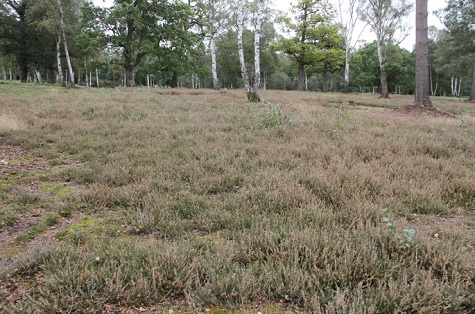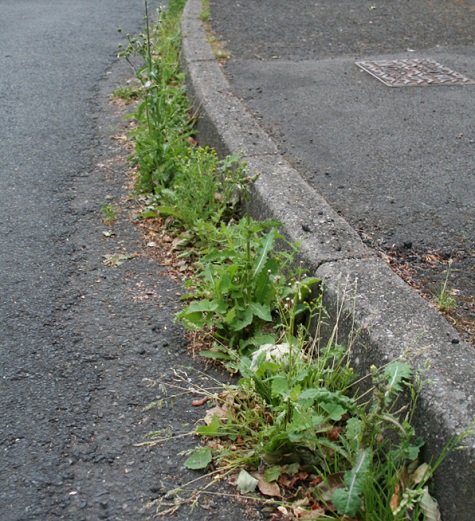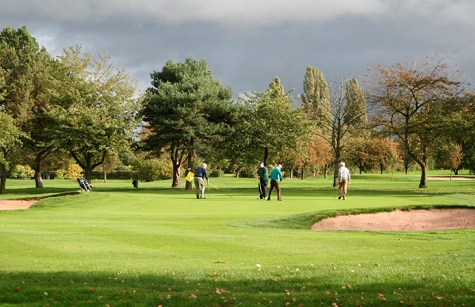
This is the last in a series of articles written during 2023 which have focussed upon sustainable practice in the amenity sector. Throughout, the key purpose has been to help all readers increase their understanding of the topic, learn from the experiences of others and help them deliver sustainable practice in their own organisations and operations. In this final article we seek to bring together some of the key points made over the series.
"Sustainability is no longer about doing less harm. It's about doing more good." ~ Jochen Zeitz
At the start of all these articles, I have emphasised the definition of sustainability and its three pillars of economic viability, environmental protection and social equity. When seeking to implement sustainable practice, we consider all three as a whole and not just one in isolation, an integrated approach. For example, we may take an action that seems environmentally beneficial but it may prove uneconomic, or indeed, have social implications, for example by increasing the carbon foot print of the activity. If we fail to take such an integrated approach to sustainability, we run into the danger of what is sometimes referred to as green washing, thinking we are being more sustainable but not so. In the first article, I chose to illustrate this by referring to a typical UK Golf Club and it is worth repetition of some of the key points made here.
The first aim of that Club is to be an economically viable business with financial margins sufficient for re-investment and future development. Without this it is not sustainable, and so economic viability is an essential element in sustainability. A further aim of the Club is to, wherever possible, protect the environment and seek to ensure that operations undertaken have as little as possible impact upon its surroundings. This it can do through such things as re-cycling practices, looking to reduce carbon emissions from machinery used and other activities and, in managing the surrounds to the golf course, looking how it might encourage biodiversity and insect life. The third aim, in a sustainability context is to consider how what it does effects society. The Golf Club needs to deliver a first class product to its visitors and members but also seek to minimise its impact upon those who live close by and ensure its staff are safe, as well of course those who use its facilities.
What is clear is that implementing sustainable practice is complex and must be related to particular situations. There is no simple blue print, or what is sometimes referred to as a ‘big bang’ approach. Again, throughout this series, I have emphasised the need, when moving to more sustainable practice, to recognise it as series of carefully considered small steps or actions. In considering how an organisation might become more sustainable, a first step is to undertake a simple audit of current practice and conditions. This need not be over complicated but effectively a full appraisal of the starting point, establishing realistic actions and setting clear targets to measure success.

Heather regeneration at Enville GC
The fact is that many organisations are already operating and demonstrating sustainable practice but often do not recognise this, nor talk about it. Those who work in the amenity sector do a highly important and essential job impacting on everyone in their daily lives, keeping spaces safe and healthy and fit for purpose. However, we can be reticent to say that, and this is the same when it comes to sustainable practice. A recent comment in the national press was critical of golf courses as being highly manicured spaces and damaging to the environment. Yet how wrong can that be, as those who manage them know. We need to speak out and be proud of what is done. That does not mean more is not possible, certainly not, but we need to be clear on our individual starting points.
So firstly we audit and then we look at improvements, but in the context of the three pillars and an integrated approach. For example, the drive away from diesel power to cleaner options such as electricity is understood and can make good business and environmental sense. However it also needs to be a practical move. If you are say a lawn care business where employees travel between properties frequently, there needs to be facility to re-charge daily. Often given the wide areas worked, vans may not always return to base and employees may not have charging capacity at their homes. Also if a distributor uses electric power, they need to build charging stops within their logistical planning and, for long hauls, this can prove very difficult. Supporting infrastructure for electrical powered vehicles has still a long way to go.
To quote another previous example in relation to hard surface weed management, again the optimum solution will vary with respect to individual circumstances. In the City of Cardiff, an extensive study was undertaken comparing different approaches to weed management. This took in wide ranging factors of economics, public perception, resource use and important life cycle analysis (LCA). In assessing the carbon footprint of a product or activity, it is important to consider the process at all stages of its life so to speak – production, distribution, application and disposal. The Cardiff Study indicated that, for their given situation and circumstances, spraying with glyphosate was the most sustainable option when measured across all the three pillars. It is stressed that each situation can vary but it is an example of what, at the outset, might seem the best action need not necessarily be so. What is clear is when taking actions of sustainable practice, it is important to define the starting point, plan carefully and monitor as well as review.

Having said this, there are undoubtedly actions that can provide simple first steps. I have referred to this as adopting a green mind set. To return to the example of a Golf Club, it is about ensuring owner and player requirements are met but with decisions always considering sustainability issues. It is about reducing reliance on pesticides for example, albeit needed in many cases, but seeking to manage and encourage nature in a golfing setting that can enhance the player’s experience. The use of slow release fertiliser can promote more efficient action and reduce waste. And there are great strides taking place in grass breeding so choice can be best suited to conditions with increased tolerance to adverse weather and soil conditions. In the club house and facilities, simple moves to save electricity by turning off lights and power when not needed, and changing to low energy lighting solutions can have significant impact on your sustainability credentials.
At the heart of it, for any organisation, is the development of a best practice plan which takes into account all the factors involved, including the development of the environment and its ecology, as well as more nitty gritty issues like reducing energy costs and the like. So, despite the challenges economically, and not least the labour pressures, sustainability need not be complex or difficult to achieve, but more of a mind-set issue.

What though is clear is that the topic cannot be ignored. If nothing else, government pressures and targets are drivers. The push towards zero carbon and the like are well known. Also the UK is not acting in isolation, it is a global issue. As the dictionary definition succinctly put it ‘’Sustainability is a societal goal that broadly aims for humans to safely co-exist on planet earth’’. It is at the heart of all governments’ decision making, and seeking to deliver the stated aim must be one for all of us.
Throughout these articles, we have looked at a range of ideas and actions which might help in the move towards more sustainable practice. I certainly hope that these have proved helpful. The amenity sector is an extremely diverse one and there can be no standard blue print or should there be so.
One thing for certain is that the agenda of sustainability is not going away and we can all play our part in its delivery. And to add a further quote, this time one by Sir David Attenborough ‘It is surely our responsibility to do everything within our power to create a planet that provides a secure home, not just for us but for all life on earth’ I just hope that the series during this year has helped provide some pointers in your search for sustainable practice.
Previous articles in this series were - Defining Sustainability, Sustainability In Practice, Sustainability At The Sharp End, Sustainability In Supply, Managing Weeds Sustainably, Innovation & Sustainability, Life Cycle Analysis and Sustainability, Implications for Training & Education, Taking A Global Look At Sustainability and Sustainability and the UK Action Plan.

































































